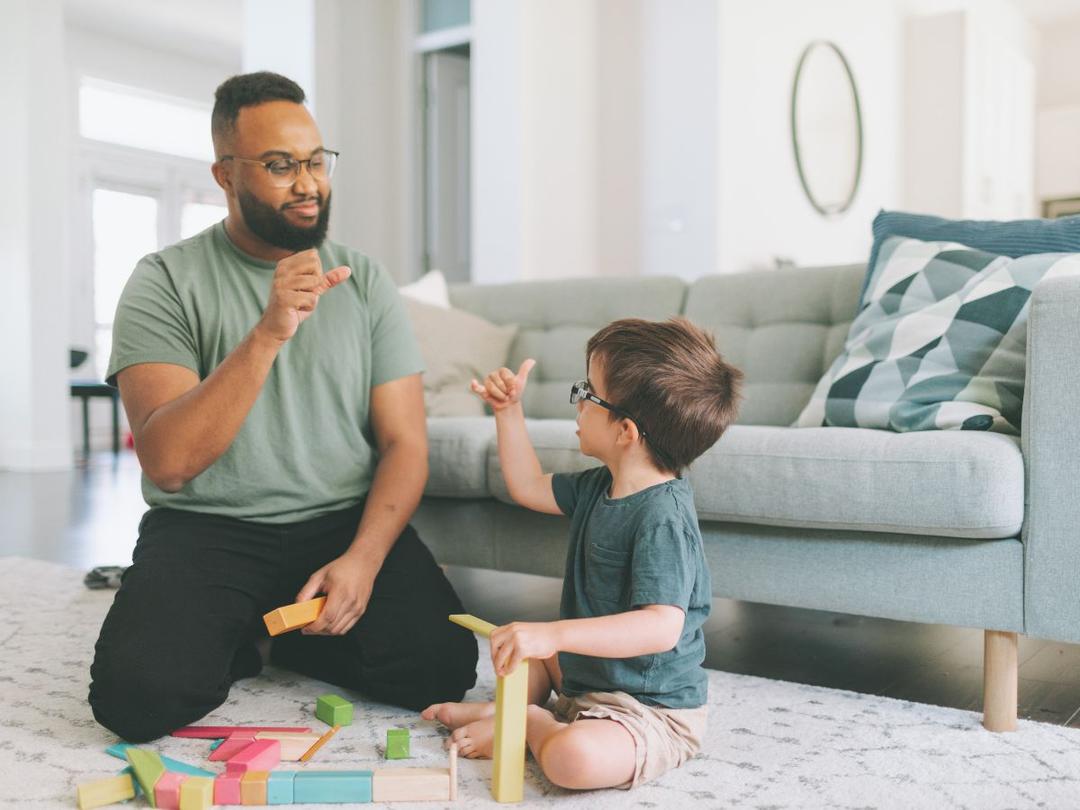Speech Teletherapy

Increasing your Child’s Expressive Language Skills
How can you get involved?Feeling like your child is falling behind in their communication and expressive language activities for toddlers can be tough but if you’re reading this then you’re on the right path to making proactive steps to improve your child’s development.But where do you start?This is a question we hear a LOT; ‘how can I help improve my child’s expressive language skills at home?’Whether you’re using a professional speech therapist or not, there are all sorts of amazing – and fun – expressive language activities for toddlers and techniques that you can use at home or out and about to encourage and nurture your child’s expressive language skills.Tips for Increasing Expressive Language Skills1. Keeping high value motivators out of reachSo we need to start here by discussing what a ‘high value motivator’ is. Spoiler alert: it’s different for everyone.High value motivators are what make your child tick. It could be a particular toy, a certain snack or, as it was in my case, their favorite stuffed animal (Hendy the horse lives on in this post).Whatever it is that your child likes to play with, scribble on, cuddle or chew, more than anything else. This is one of your high value motivators.Okay, so why keep them out of reach?The idea here is to prompt your child to have to ask for their favorite toy. If it’s readily available who do they need to communicate with to get it? Nobody.So, by storing high value motivators in places only you can reach, we can both prompt communication and demonstrate how communication has rewards to offer which reinforces a positive relationship with communication for the child.Remember: Communication isn’t only verbal and might not be full words let alone sentences. Depending on where your child is in their development, gestures, rudimentary sounds or even glances can be a step in the right direction.2. Forced alternativesForcing alternatives is a personal favorite technique and a great way for you to easily get involved in your child’s speech therapy.The concept is simple. Instead of asking your child whether they want something, give them one or more alternatives so that they have to verbalize their choice.Instead of “Would you like this dolly”Ask “Would you like the dolly, the car or the coloring book?”As with your high value motivators, your child’s stage of development will influence how much you want to push for the spoken answer, especially if the items are in sight. If your child points to the object, sometimes the fact that they’re listening, and understanding can be enough. If, however, you’re a little further along than that, then you can gently probe with a follow up question like “Which one?”This technique can be used at many stages throughout your child’s speech and expressive language development.Other forced alternatives you could use are:Show your child a picture of another child crying and ask, “is the child crying or eating?”Show your child a picture of the outdoors and ask, “is it sunny or raining?”When your child is playing perhaps ask “Does (toy’s name) make you happy or sad?”3. Modeling correct speechMispronunciation is totally normal in children as they develop their language skills, especially as toddlers. It’s important to show your child the correct way to pronounce the words they struggle with but we’d usually steer clear of a ‘that’s not how you say it’ approach.Instead, when your child mispronounces something, mirror their speech with the correct pronunciation.i.e. Child: “It’s lellow”Parent: “Yes, it is yellow isn’t it?”Positively reinforcing is the key here. It’s important to understand that what you hear and what the child hears can be different. Some children might not realize that what they say sounds different to what you say. You may have noticed this at some point. It’s not uncommon for children to correct you when you mirror their incorrect pronunciation.Child: “It’s lellow”Adult: “Yes, it is lellow isn’t it?”Child: “It’s not lellow, it’s lellow.”4. Read, read and read some moreReading books with your child, even in this technological age, is an incredibly important and beneficial activity to take part in. If you’re not doing it already, start. If you are, do it more.There are so many benefits to reading with your child. It serves as a provocation to communication on their part, encourages listening and turn taking and gives you something to talk about if your imagination is running low (they’re hard to keep up with sometimes, right?).Picture books are especially useful. Try to find a picture book with no words, sit down with your child with as few external distractions as possible and see what stories you can come up with between you. This is a reciprocal activity so it’s just as much about you modeling proper speech and language, as it is your child.So which of these pointers are you already using? Which are you most looking forward to trying out? And what’s your favorite way to get your little one talking at home.Let us know and we’ll see you in the next post!Need more help with your child on how to improve expressive language? See how Connect Teletherapy therapists can help your child increase their expressive language skills! Schedule a consultation today to learn more about our expressive language development or speech therapy services!

Top 5 Reasons Children Need Therapy
It’s not uncommon for children and teens to have problems that affect how they feel, act, or learn. If these problems interfere with your child’s everyday life, it may be necessary to get therapy. You might wonder does my child need counseling? Does my child need therapy? Why would a child need therapy?In therapy, kids can talk about and learn how to resolve their problems. Counseling can help with various issues, including fine motor skills, depression and anxiety, and even speech problems. Let’s discuss about the signs child may need behavioral therapy.Here are the Top 5 Reasons Children Need Therapy1. Depression or anxiety.Why do kids need therapy? Mood disorders are common for all ages, but often they start during the teen years. If your child seems irritable, sad, or withdrawn, consider talking to your pediatrician. An early and accurate diagnosis of depression can be the key to finding an effective treatment for it. Anxiety disorders are also common, and these disorders can interfere with many aspects of your child’s life, including friendships and academics. This is one of the signs your child needs to talk to a therapist.2. A sudden drop in grades or change in mood.If there is a sudden change in your child’s behavior, this is generally a cause to seek counseling or therapy. This is a signs child may need behavioral therapy. Whether your child’s grade suddenly go from high marks to failing or your bubbly child is now moody and depressed, speaking to a professional can be highly beneficial.3. Delays in development.When your child is young, there are certain milestones they must meet to ensure they are developing normally. Some of these milestones include holding a pencil, cutting out shapes, and playing with legos. If it seems that your child is not advancing in these tasks at a normal rate, then it might be a signs your child needs counseling and thus, occupational therapy is available. Why do kids need therapy? Occupational therapy can counsel your child in fine motor skills, gross motor functioning, sensory regulation, and executive functioning.4. Grief.Children have a range of emotions just like adults do, and if there has been a death in the family, be it a family pet or a human family member, they may be grappling with the feeling of grief and loss. Grief can extend to other things as well, such as moving locations and losing friends or dealing with the loss associated with divorce and it can be a signs your child needs counseling. Whatever grief your child may be experiencing, therapy can help mitigate and regulate those feelings.5. Speech problems.Finally, speech and communication is a crucial part of a child’s development, and if a child is having issues here, then there are many different therapy options. Children can receive therapy for speech production problems, fluency issues, such as stuttering or cluttering, and even communication problems associated with autism spectrum disorders. You must know these signs your child needs to talk to a therapist.Why would a child need therapy? Therapy can be beneficial for children of all ages, and it doesn’t always have to be done in person. If you have a busy schedule to adhere to or you can’t find the perfect therapist within your travel range, you can always opt for online therapy.Online therapy, such as the therapy offered by connectteletherapy.com, offers many ways for children to get the therapy and counseling they need.

How to Promote Resilience in Kids
Everyone is capable of working through challenges and coping with stress, even children. Resilience is a person’s ability to recover from stress, adversity, failure, and challenges. Resilience isn’t something people have or don’t have. This is a skill that people can develop as they grow.Resilient people are more likely to take healthy risks because they are not afraid to fail. They are also brave and trusting of their instincts, and they know their limits. They don’t hesitate to push themselves out of their comfort zone, especially if it helps them reach long-term goals or solve problems.All children will encounter stress of varying degrees as they grow, whether from schoolwork, illness, or bullying. Helping them build resistance can help them work through these difficult issues.How to Promote Resilience in Kids: Five tips for Building Resilience1. Maintain a daily routine.Schedules and consistency are important to maintain, especially for younger children or children that suffer from anxiety or depression. Children thrive when they have structure, and structure can help build resilience by giving your child something constant. During times of transition or stress, there can be a little flexibility with the routine. At the same time, however, the bulk of the routine should be maintained.2. Set reasonable goals.Setting goals and breaking down the steps to achieve them is important to building resistance. Having goals can help children move forward one step at a time despite challenges. The best way to start incorporating goal setting into your daily life is by helping your child break down assignments into smaller, easily achievable milestones. As they get older, their goals can become bigger and more difficult to accomplish.3. Encourage positivity.A negative self-view will not help in the way of resilience. People with a negative self-view are more likely to give up or quit trying when they do not see immediate results. To encourage positivity, remind your child of times and ways they have overcome hardships in the past.4. Allow independence.As a parent, it’s difficult to watch your child struggle, but intervening whenever they have a problem isn’t helping them. It’s important to allow your child the independence to solve problems on their own. Whether it takes them five minutes or five days, cheer them on as they work, but don’t solve the problem for them!5. Accept change.Finally, change is a necessary part of life, even if it feels overwhelming at the time. Change is often scary for children and young adults, but setting new goals in the place of unattainable goals is a good way to begin adjusting to the inevitability of change. For some children, it’s important to point out ways they have changed, such as by moving up grade levels and shifting schools. This will remind them that they can handle new situations.All children, regardless of their age, will go through moments of fear and anxiety. Resilience is a skill that helps them bounce back from these situations and become better and stronger individuals.Every approach to building resistance is unique and different. However, if your child seems stuck or overwhelmed by the process, they may need the help of a psychologist or counselor. Counselors, such as those available from Connect Teletherapy, can help your child build on their resilience in a flexible environment. They can teach them how to apply them in their everyday lives, so they are as prepared as they can be for life’s inevitable challenges.

Tips to Help your Child’s Speech and Language Skills over the Holiday Break
During the school semester, your child gets plenty of support with their speech and language skills. However, once the winter break starts, consistent practice can lessen. Especially for students who have trouble with their speech and language skills, it’s important to continue practicing these skills even when they do not have speech therapy sessions. Practicing speech and language skills during the holiday break can be easy and fun for the entire family. Here are four fun ways to help your child’s speech and language skills over the winter vacation.4 Ways to HELP Your Child’s Speech and Language Skills Over the Holiday Break1. Bake togetherNot only can baking help your child practice their fine motor skills, but it can also help your child practice reading and following directions. For the recipe to be successful, your child must pay attention to detail and to the order of the steps. When baking with your child, it’s important to let them make mistakes in the process, so they learn why they must follow directions in the sequence they’re given. The best part about this practice is that there is something sweet to eat once the recipe is complete!2. Let them help you decorateBetween Thanksgiving, Christmas, Hanukkah, and New Year’s, there are plenty of chances to put up and take down decorations. The decorating process requires plenty of communication, along with attention to detail. If you are an organized person, then the decorating process can include following a sequence of instructions, such as how to pack away the Christmas decorations or follow the directions to put up an artificial tree. This is a great opportunity to practice your child’s speech and language skills by getting them to participate and communicating simple instructions to them.3. Bring back storytimeOne of the best parts about the holidays is that there is a lot more time to spend with the family. Because of this extra time, it is the perfect opportunity for you to bring back storytime. Whether you choose to read to your child or have your child read to you, you can set aside a little time before bedtime to read a chapter or two from their favorite book. While you may think having your child read is the best way to improve their language skills, it is actually better for reading comprehension for you to read to your child. After you finish reading the chapter, you can spend time discussing what you read with them.4. Engage your child in open-ended conversationFinally, don’t hesitate to engage your child in an open-ended conversation. Open-ended questions are questions that require more than one-word answers. Answers to open-ended questions can come in the form of lists, few sentences, or something even longer, such as a short explanation or story. Open-ended questions allow your child to insert feelings, attitude, and understanding of the question in their answer.Holiday breaks are a time to spend with family, but it doesn’t mean you can’t work on speech and language skills simultaneously. In fact, the break is a great time for you to engage your child in open-ended conversation and help them with their reading comprehension skills by talking to them about books you have read together.If you find that your child needs extra help with speech and language communication, then the holidays are a great time to get your child into therapy. Online therapies, such as Connect Teletherapy, offer flexible scheduling that you can work around the winter festivities.
